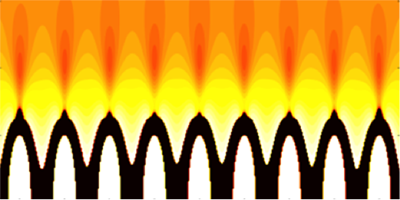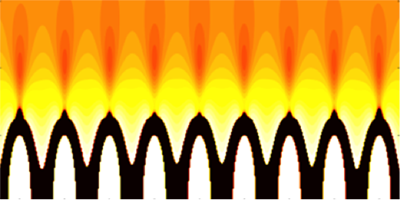Downsizing Optical Lattices
Optical lattices formed by interfering laser beams provide a highly controllable test bench for trapping many atoms at once and studying their interactions. Because of diffraction, however, the wavelength of the trapping light limits how close the atoms can get to one another, and thus the achievable atomic density. As reported in Physical Review Letters, Michael Gullans, at Harvard University, and colleagues propose a way to overcome this limitation with subwavelength confinement of light produced by nanoplasmonic structures.
In the near field of a nanoparticle (i.e., at the distance of less than about one wavelength of a propagating wave), collective electron oscillations called plasmons can concentrate the electromagnetic field in regions much smaller than its wavelength. Gullans et al. show theoretically that the interference of an incident wave with the dipolar field it induces in a metallic particle creates a trapping region along the polarization direction of the field. In the case of silver nanospheres, slightly tuning the incident light to the blue side of an atomic resonance in rubidium should cause an atom to cling to the sphere. Arrays of nanoparticles could therefore act as anchors for an ordered lattice of ultracold atoms.
The authors suggest that with their proposed method, lattice spacings could be reduced by about an order of magnitude, from nanometers down to less than nanometers. Should experimentalists realize such nanoplasmonic lattices in the lab, the increased atomic density would allow the exploration of new regimes of dense, ultracold quantum matter. – David Voss





